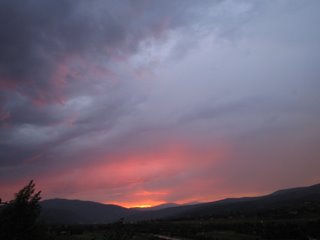
This wine immediately hits the back of the palette with it’s tartness, while the front of the palette is clean and bright. This would be great with green salads, fruits, and oh yes, oysters. This wine has an excellent salty flavor that really gets the palette salivating for food, and oysters more than anything, at least for me. Right this second I really wish it weren’t summer and we could be eating some Kumamotos at Mary’s Fish Camp. Soon. The oyster eating months are returning (right now they are spawning in warm water, so I wouldn't recommend eating them just yet). We ended up having this bottle with grilled salmon, mostly because I didn’t feel like opening our good bottle of Russian River Chardonnay. We decided to drink this cheaper bottle instead. I’m saving that Chardonnay for the last white to drink in Colorado before we move back to New York. Just a couple weeks left here in the mountains and we have been playing hard.
 Tasting notes
Tasting notesColor: Straw colored
Nose: Clean aromatic, citrus and hints of green apple
Taste: Sour green apple with a citrus twist that leads you down the righteous path to bright, clean acid. Some might call it lemon squirt. I haven’t had something this tart since the last time I sucked on a green apple Jolly Rancher. The mouth feel is light bodied and lean. You get salty fruit, minerals, lots of depth and length. Robert Parker gave the 2003 vintage an 89, though for the low price of $12 I’d give it a high score for value.
Most likely this wine, with all the good acidity, could handle a couple years of cellaring, but there’s no real reason to do it. Drink now and buy another bottle for later. The Domaine de la Quilla is available in many stores in the New York area. Or you can always try winefetch.com for locating the cheapest price.













